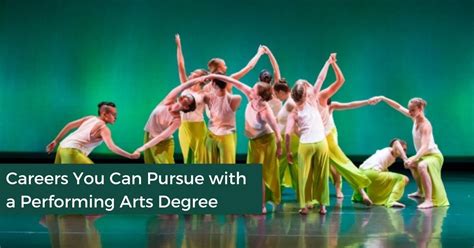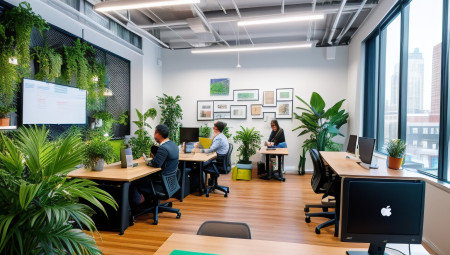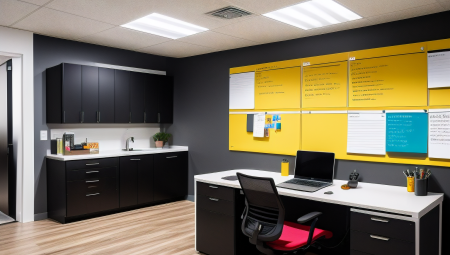Welcome to The Art of Expression: Pursuing a Career in Performing Arts! In this blog post, we will delve into the exciting world of performing arts and explore the various disciplines within this creative industry. Whether you’re an aspiring actor, dancer, musician, or any other type of performer, this post will provide valuable insights into developing your unique artistic voice and navigating the competitive landscape of the performing arts industry. From training and educational opportunities to managing stage fright and performance anxiety, we’ll cover the essential skills and strategies for success in this dynamic field. Join us as we discuss the challenges and rewards of building a career in the performing arts, and discover how to stay inspired and motivated as you fulfill the demands of this fulfilling and vibrant profession.
Table of Contents
Exploring Different Performing Arts Disciplines
When it comes to pursuing a career in the performing arts, there are a wide variety of disciplines to consider. From dance and theater to music and circus arts, each discipline offers unique opportunities for artistic expression and creativity.
One of the most exciting aspects of exploring different performing arts disciplines is the opportunity to expand your skillset and discover new passions. Whether you are a seasoned performer or just starting out, trying your hand at new disciplines can help you develop a well-rounded and versatile artistic voice.
Additionally, exploring different performing arts disciplines can provide valuable insight into the larger world of performance. By immersing yourself in various disciplines, you can gain a deeper understanding of the industry as a whole and connect with a diverse community of artists.
Ultimately, exploring different performing arts disciplines allows you to push the boundaries of your creativity, expand your artistic horizons, and grow as a performer. Whether you find your niche in one discipline or dabble in several, the journey of exploration is an integral part of the performing arts experience.
Developing Your Unique Artistic Voice
Developing your unique artistic voice is an essential aspect of becoming a successful performer. It involves finding and honing your own individual style and expression, which sets you apart from others in the performing arts industry.
One important step in developing your artistic voice is self-exploration. This means taking the time to understand who you are as a person and as an artist. Reflect on your experiences, emotions, and values, and consider how these aspects of your identity can be integrated into your performances.
Another key element in developing your artistic voice is experimentation. Try out different techniques, genres, and forms of expression to expand your creative horizons. This process of trial and error allows you to discover what resonates with you and what makes your performances truly unique.
Lastly, developing your artistic voice requires authenticity. Stay true to yourself and your vision, and don’t be afraid to take creative risks. Embracing your individuality and staying true to your artistic instincts will ultimately set you apart and make your performances stand out.
Navigating the Competitive Performing Arts Industry
When pursuing a career in the performing arts, it’s essential to have a clear understanding of the competitive landscape. The industry is filled with talented individuals vying for the same opportunities, making it crucial for aspiring performers to navigate this competitive environment strategically.
One of the key factors in navigating the competitive performing arts industry is cultivating a strong personal brand. This involves showcasing your unique talents, strengths, and artistic voice in a way that sets you apart from the competition. Building a distinct and recognizable brand can make all the difference in standing out to casting directors, agents, and other industry professionals.
In addition to building a personal brand, performers must also be proactive in seeking out opportunities and making connections within the industry. Networking and collaboration play a significant role in navigating the competitive landscape, as they can lead to new opportunities, mentorships, and valuable industry insights.
Finally, it’s important for performers to stay motivated and resilient in the face of competition. Rejection and setbacks are inevitable in this industry, but maintaining a strong sense of determination and passion for your craft can help you navigate the ups and downs of the competitive performing arts world.
Training and Educational Paths for Performers
When it comes to pursuing a career in the performing arts, it’s essential to explore the various training and educational paths available to performers. Whether you’re interested in dance, theater, music, or any other creative discipline, finding the right educational program can be crucial to your success in the industry.
Many aspiring performers choose to attend performing arts schools or conservatories, where they can receive comprehensive training in their chosen discipline. These programs often provide a well-rounded education that includes not only technique and performance skills, but also valuable industry knowledge and professional development opportunities.
Another option for performers is to pursue a degree in the performing arts at a college or university. These programs offer a more traditional academic approach to performing arts education, with a focus on both artistic development and theoretical studies. Students may have the opportunity to participate in productions, collaborate with fellow artists, and gain a deeper understanding of the history and theory behind their chosen art form.
For those who prefer a more flexible approach to their education, there are also opportunities for performers to receive training through workshops, master classes, and private lessons. This can be a great option for those who want to tailor their education to their specific goals and interests, or for performers who are already working professionally and looking to expand their skillset.
Balancing Creativity and Technique in Performance
When it comes to performing arts, balancing creativity and technique is essential for achieving an impactful and memorable performance. It’s important for artists to find a harmonious blend of technical proficiency and creative expression in their work. Without the ability to balance these two elements, performances can either become rigid and lacking in emotion, or chaotic and lacking in structure.
One way to achieve balance between creativity and technique is by constantly seeking opportunities to learn and grow as a performer. This can involve taking classes or workshops to hone technical skills, as well as exploring different methods of expression to nurture creativity. By consistently working on both aspects of performance, artists can ensure that they are always moving forward in their artistic development.
In addition to regular training and practice, collaboration with other artists can also be a valuable tool for balancing creativity and technique. Working with different types of performers, such as musicians, dancers, or actors, can bring new perspectives and ideas to the table. This diversity can help performers break out of their comfort zones and explore new approaches to their craft.
Ultimately, balancing creativity and technique is about finding a middle ground where technical precision supports creative expression, and vice versa. This delicate equilibrium is what allows performers to deliver impactful and captivating performances that resonate with audiences on a deep emotional level.
Building a Diverse and Versatile Skillset
Building a diverse and versatile skillset is essential for any performer looking to succeed in the performing arts industry. As a performer, it is important to be able to adapt to a variety of styles, genres, and performance opportunities. This requires training in multiple disciplines, such as dance, acting, music, and acrobatics, among others. By honing skills in different areas, performers can increase their marketability and open themselves up to a wider range of professional opportunities.
One way to build a versatile skillset is to seek out diverse training opportunities. This may involve taking workshops and classes in styles of performance that are outside of one’s comfort zone. For example, a dancer might explore acting, while an actor might delve into singing or movement. By pushing oneself to learn new skills and techniques, performers can expand their repertoire and become a more well-rounded artist.
In addition to seeking out diverse training, performers can also build a versatile skillset by collaborating with artists from different backgrounds and disciplines. This may involve participating in multidisciplinary projects or working with artists who have skills that are different from one’s own. Through collaboration, performers can learn from others, exchange knowledge, and incorporate new techniques into their practice.
Ultimately, building a diverse and versatile skillset is an ongoing process that requires dedication and open-mindedness. By continually seeking out new learning opportunities and embracing diversity in the performing arts, performers can expand their capabilities and position themselves for success in a competitive industry.
Networking and Collaboration in the Performing Arts
Networking and collaboration are essential components of success in the performing arts industry. Whether you’re an actor, dancer, musician, or any other type of performer, building connections and working with others can open up new opportunities and lead to exciting creative projects.
One important aspect of networking is attending industry events and workshops. These gatherings allow you to meet fellow artists, directors, producers, and other professionals who may be able to support and promote your work. It’s also a great opportunity to learn from others and stay up to date with the latest trends and developments in the performing arts world.
Collaboration, on the other hand, involves actively seeking out opportunities to work with other artists and creative professionals. This could be in the form of joining a theater production, participating in a dance ensemble, or collaborating on a music album. By working with others, you can harness the power of collective creativity and produce work that is richer, more diverse, and more impactful.
Ultimately, networking and collaboration are about building a supportive community of like-minded individuals who share your passion for the performing arts. By nurturing these connections and actively seeking out collaborative opportunities, you can expand your artistic horizons and pave the way for a successful and fulfilling career in the performing arts.
Managing Stage Fright and Performance Anxiety
One of the most common challenges that performers face is stage fright and performance anxiety. It’s natural to feel nervous before going on stage, but for some, the fear can be overwhelming and can even interfere with their ability to perform. Managing stage fright and performance anxiety is crucial for any performer looking to succeed in the performing arts industry.
One way to manage stage fright and performance anxiety is to practice relaxation techniques such as deep breathing, visualization, and mindfulness meditation. These techniques can help calm the mind and body, allowing performers to focus on their performance rather than their fear.
Another helpful strategy is to rehearse and prepare thoroughly for performances. The more prepared a performer is, the less likely they are to succumb to stage fright. This includes not only knowing their lines, music, or choreography, but also being familiar with the performance space and any technical aspects of the show.
Seeking professional help is also a viable option for performers struggling with stage fright and performance anxiety. Therapists and counselors can provide coping strategies and tailored techniques to manage these fears in a healthy way, enabling performers to thrive in their artistic endeavors.
Finding Inspiration and Staying Motivated as an Artist
As an artist, finding inspiration can be a constant challenge. Whether you are a dancer, musician, actor, or any other type of performer, staying motivated to create and perform can be difficult when faced with creative blocks and self-doubt. One way to find inspiration is to constantly expose yourself to new experiences and ideas. This can be done by immersing yourself in different art forms, taking classes outside of your discipline, or simply spending time in nature to clear your mind.
Staying motivated as an artist also involves surrounding yourself with a supportive community. This can be in the form of fellow artists, mentors, or supportive friends and family. Having a network of people who understand and appreciate your craft can provide the encouragement and motivation needed to push through challenging times.
Another way to stay motivated is to set achievable goals for yourself. This can be as simple as mastering a new technique, creating a new piece of work, or landing a performance opportunity. Setting and achieving these goals can provide a sense of accomplishment and drive to continue pursuing your artistic endeavors.
Lastly, it’s important to take care of your physical and mental well-being. Engaging in regular exercise, proper nutrition, and mindfulness practices can help maintain a clear and focused mind, which is essential for staying motivated and inspired as an artist.
Fulfilling the Demands of a Performing Arts Career
As a performer, fulfilling the demands of a career in the performing arts can be both challenging and rewarding. It requires dedication, hard work, and a passion for your craft. One of the key factors in fulfilling the demands of a performing arts career is staying committed to your artistic goals and constantly striving for improvement.
Another important aspect of fulfilling the demands of a performing arts career is finding a balance between creativity and technique. While it’s essential to nurture your unique artistic voice, it’s also important to develop a strong foundation of technical skills that will allow you to excel in your chosen discipline.
Building a diverse and versatile skillset is also crucial for performers. This may involve training in multiple performing arts disciplines, such as acting, dancing, and singing, in order to increase your opportunities for work and collaboration within the industry.
Lastly, networking and collaboration are essential components of fulfilling the demands of a performing arts career. By connecting with other artists and industry professionals, you can gain valuable opportunities for career advancement and artistic growth.





